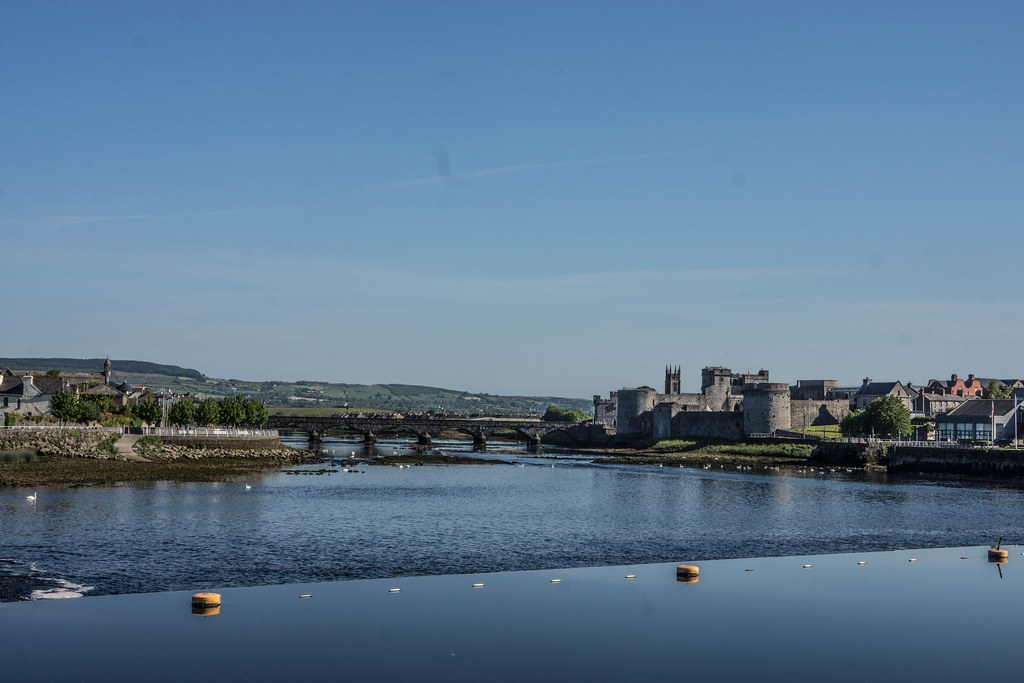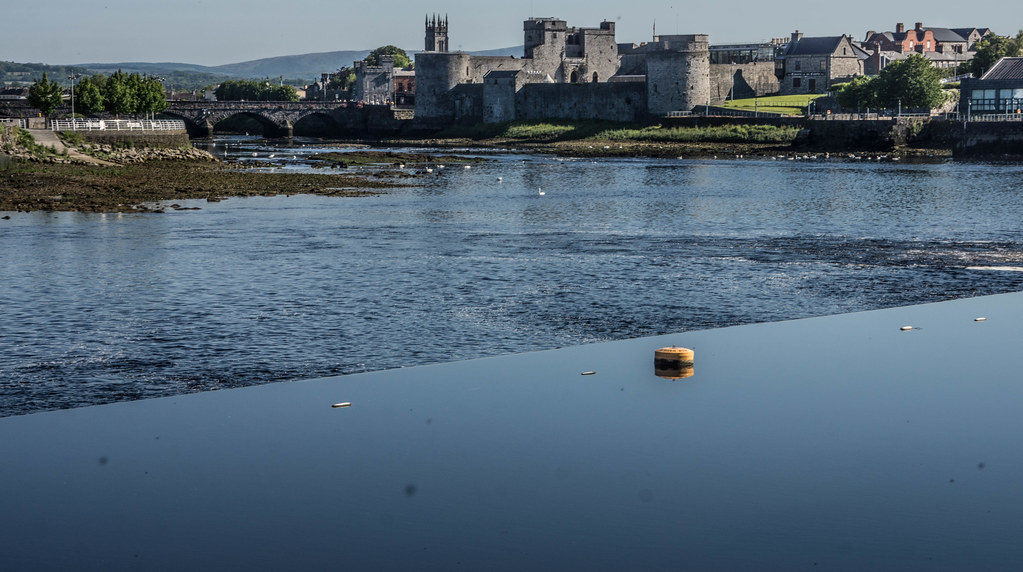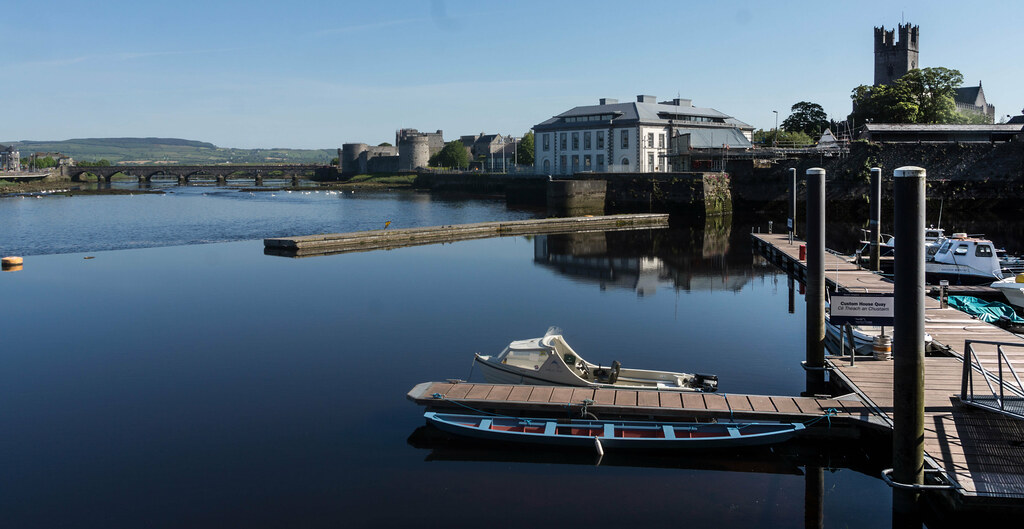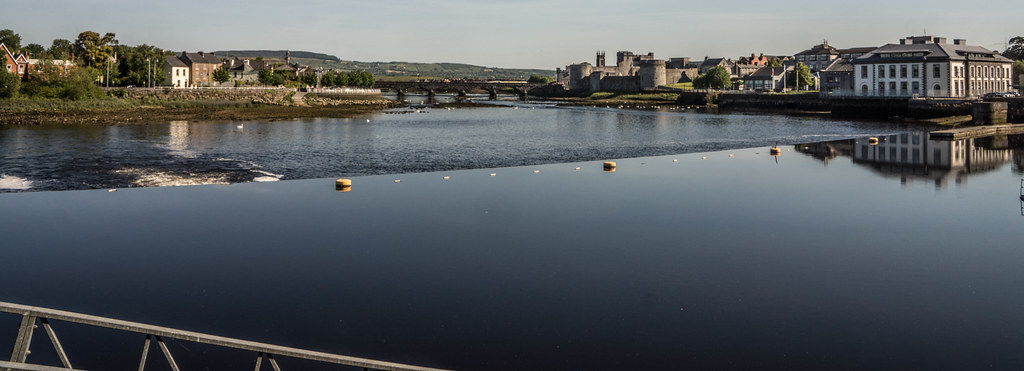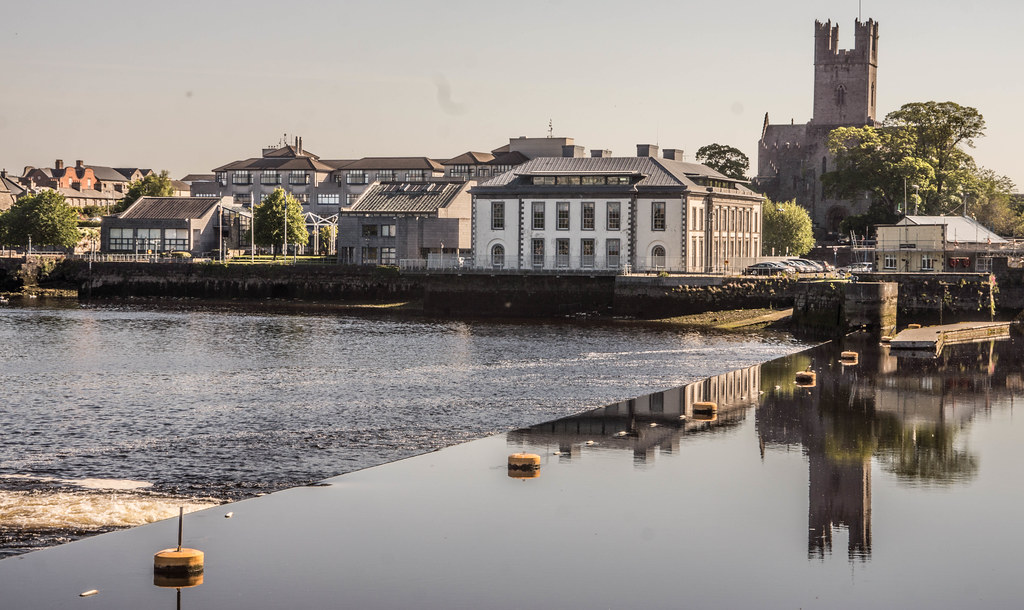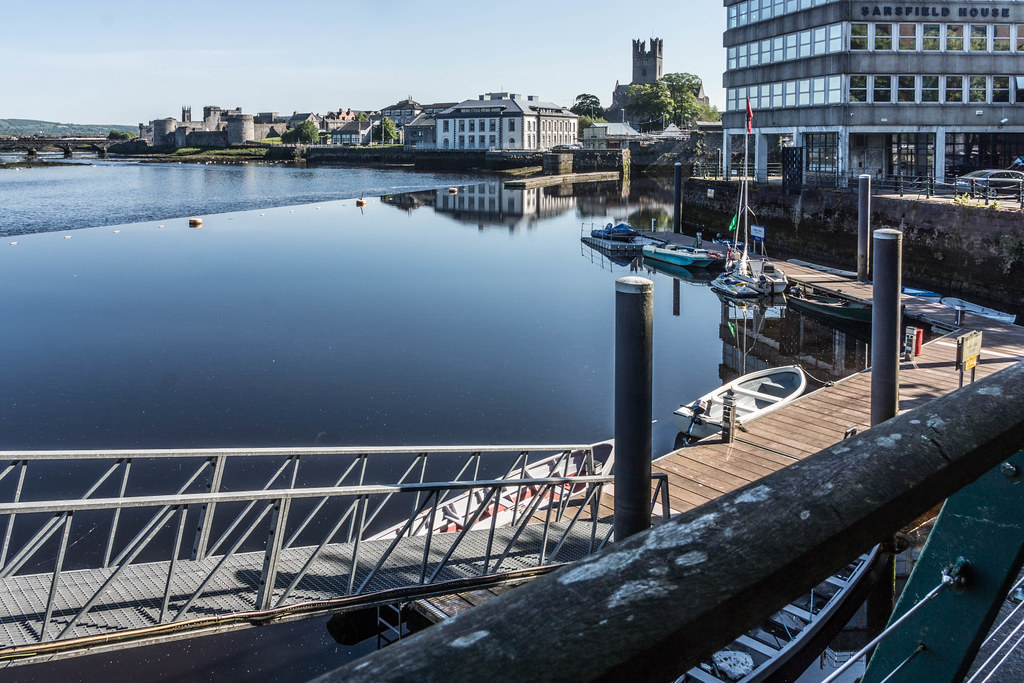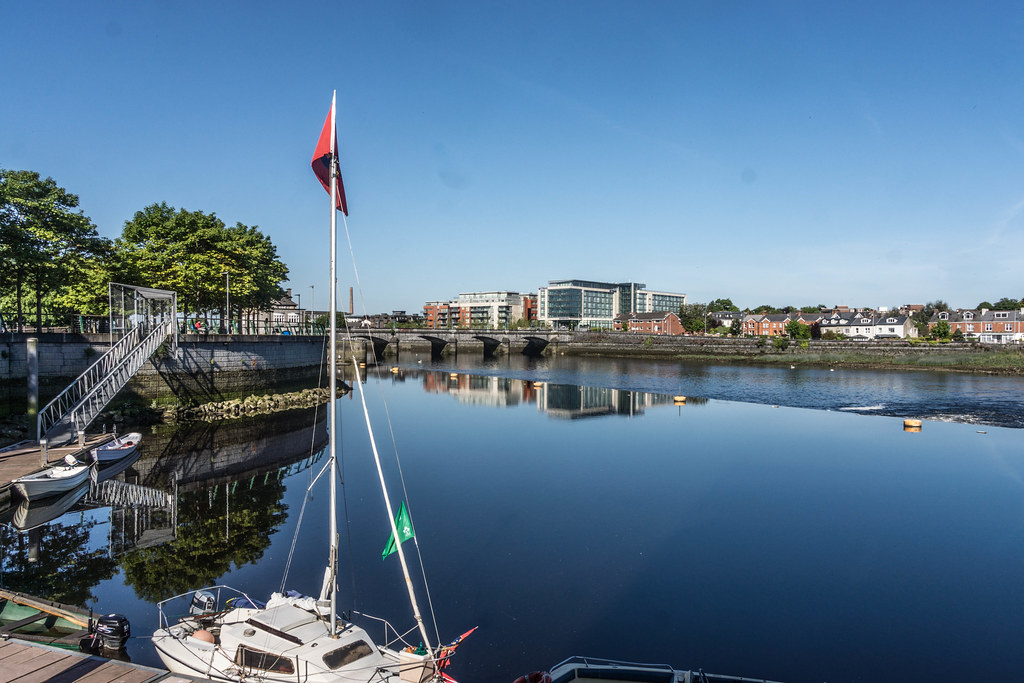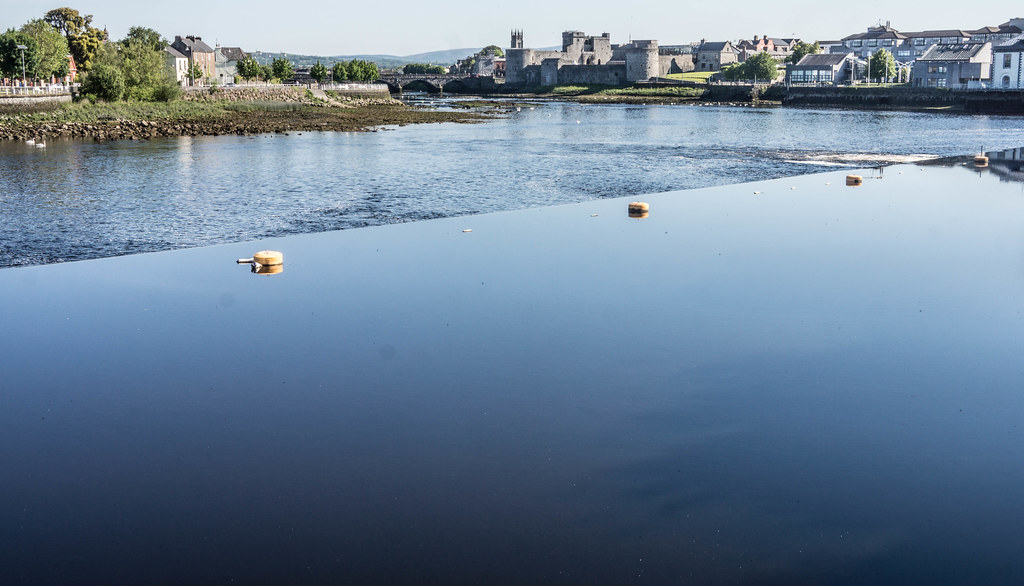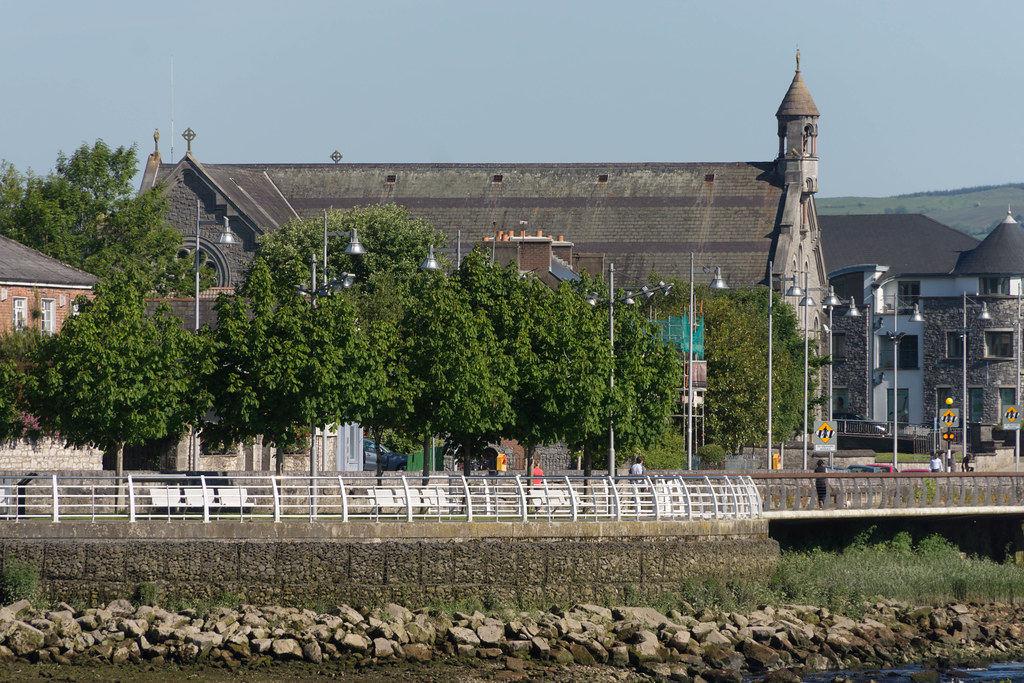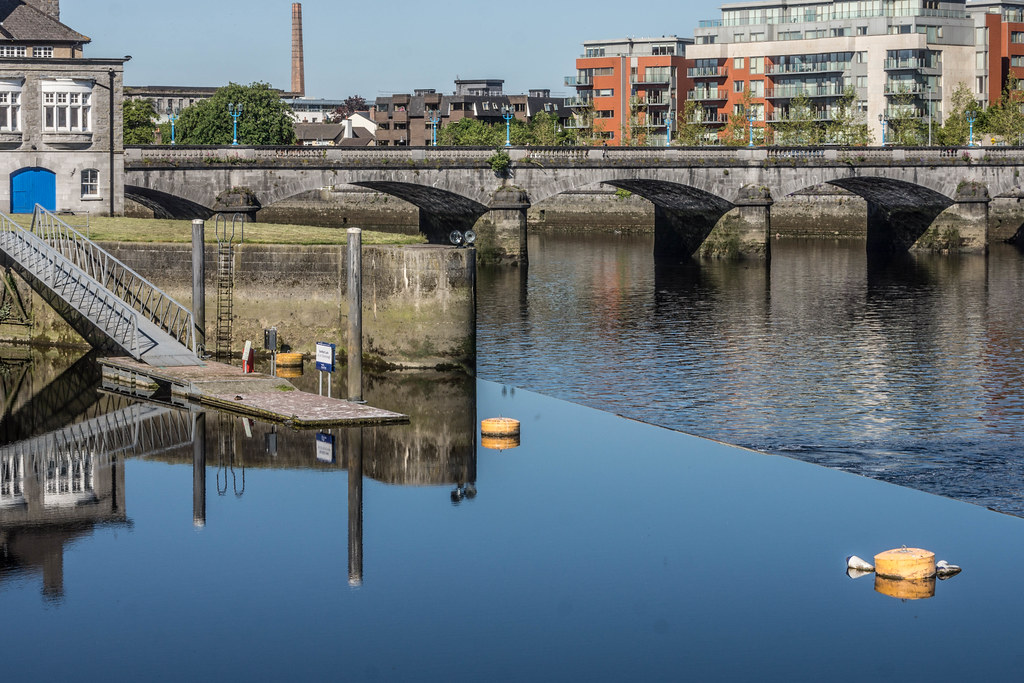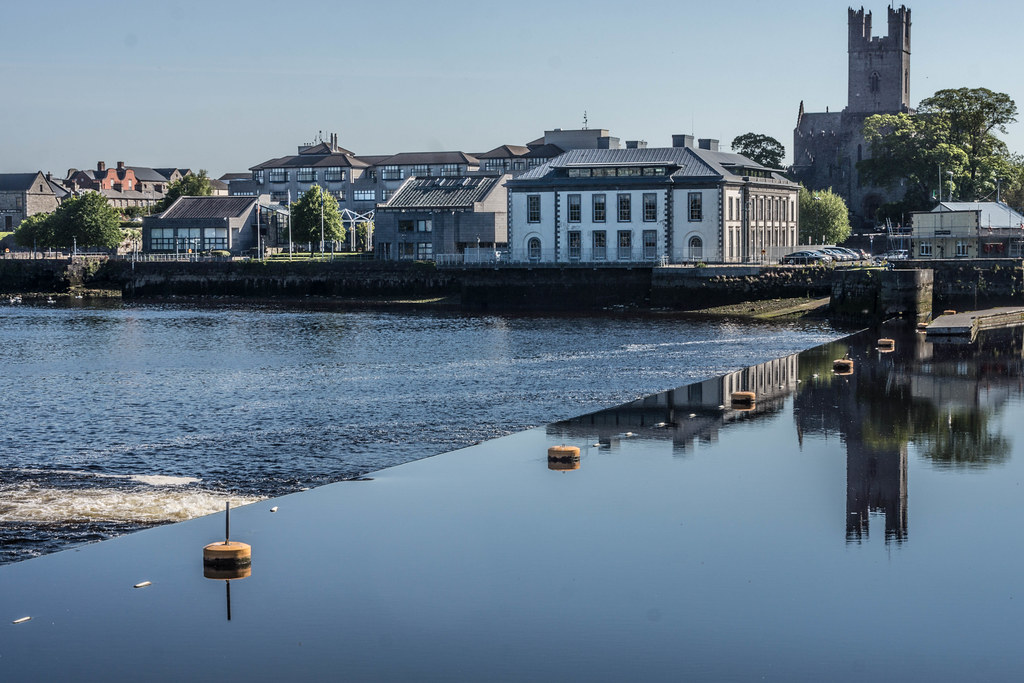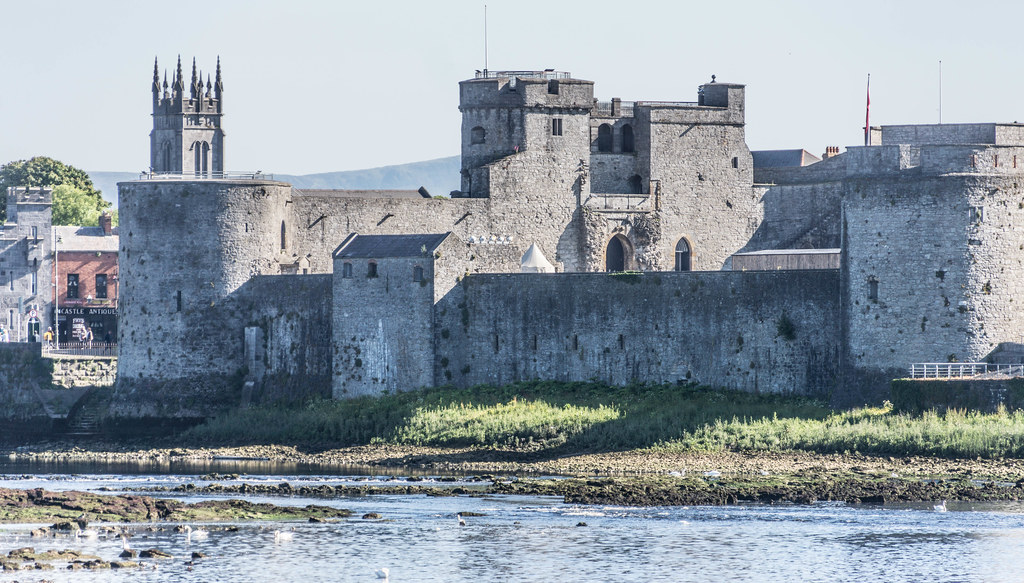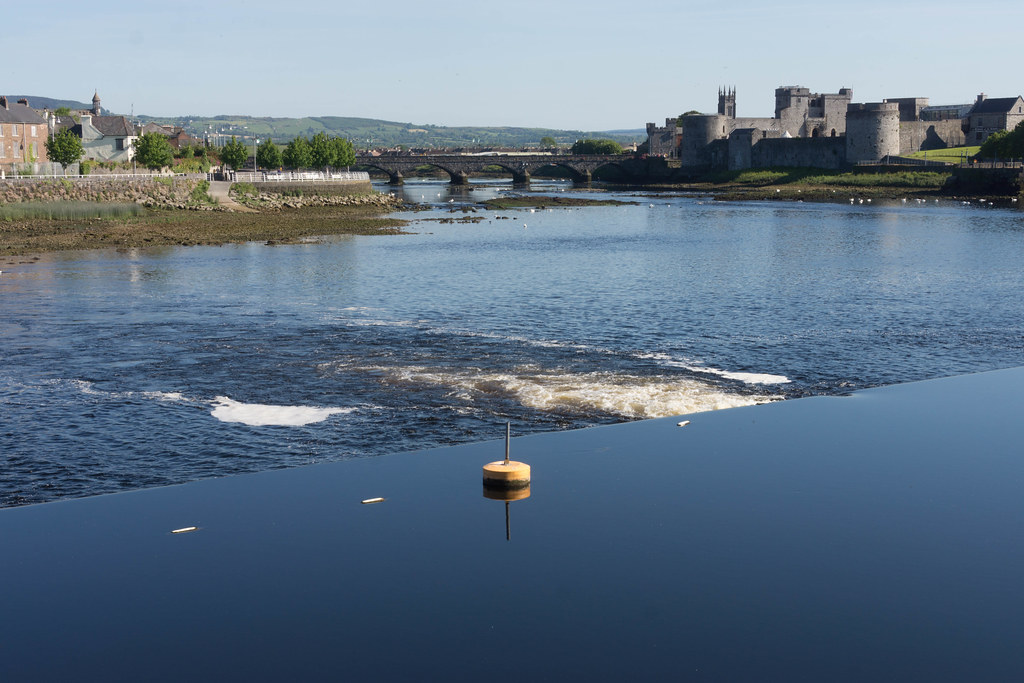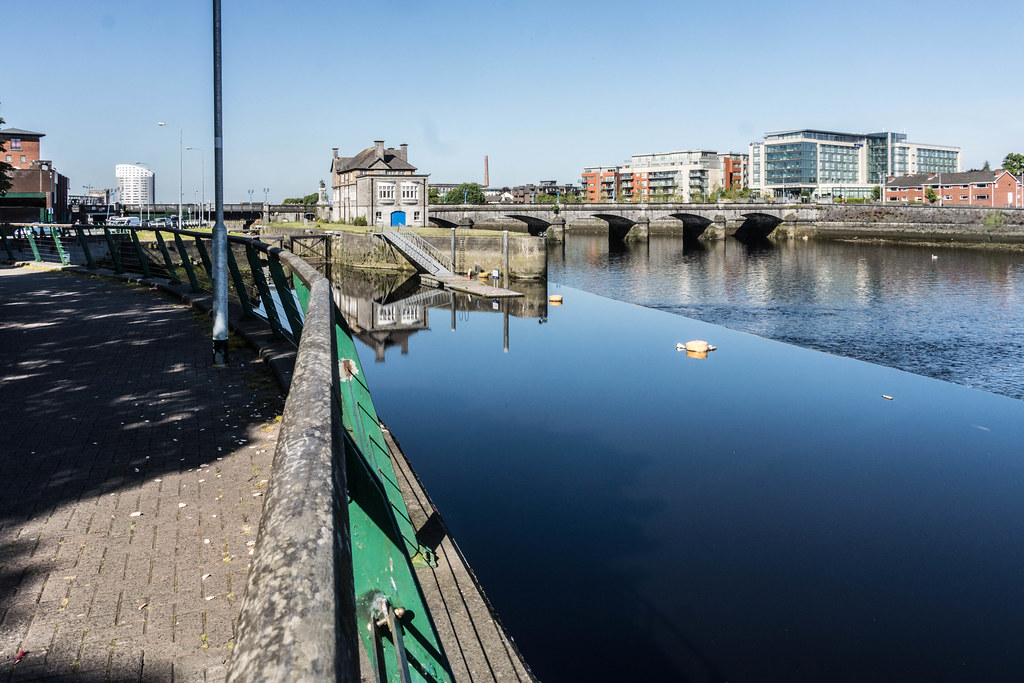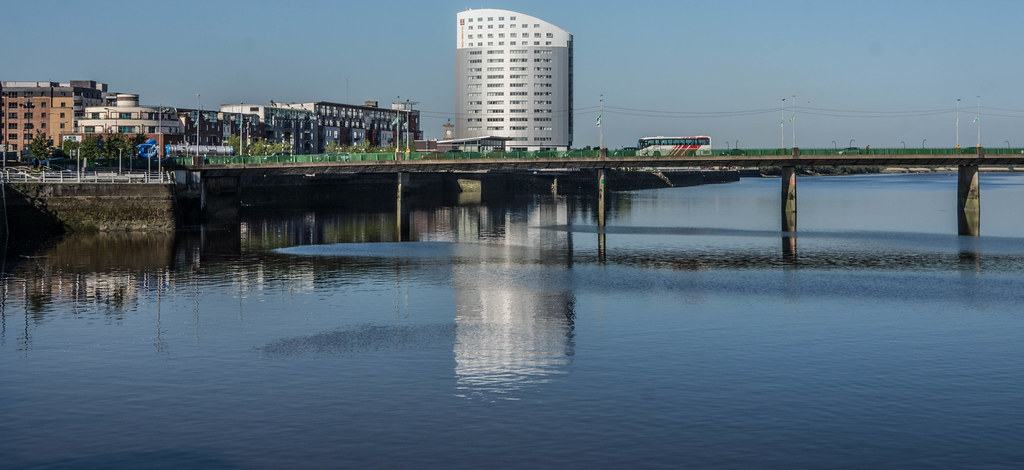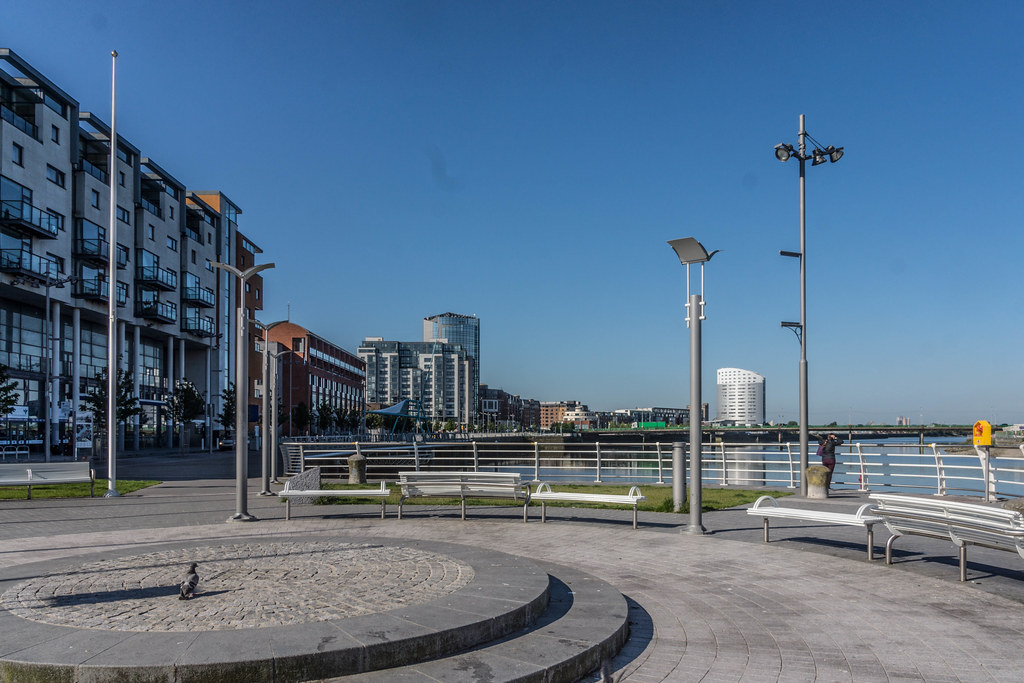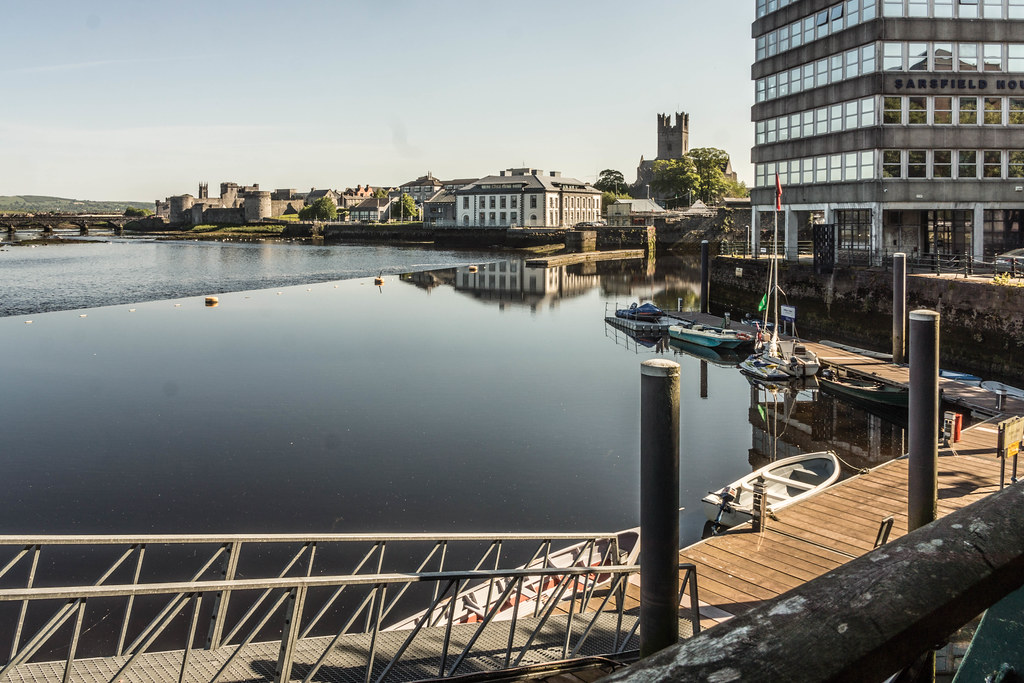ALONG THE RIVER SHANNONPHOTOGRAPHED BY WILLIAM MURPHY
SORRY FOR THE DELAY
Despite being 360.5 km (224.0 mi) long, it rises only 76 m (256 feet) above sea level, so the river is easily navigable, with only a few locks along its length.
Shipping in Shannon estuary was developed extensively during the 1980s, with over IR£2 billion (€2.5 billion) investment. A tanker terminal at Foynes and an oil jetty at Shannon Airport were built. In 1982 a large scale alumina extraction plant was built at Aughinish Island. 60,000 tonne cargo vessels now carry raw bauxite from West African mines to the plant, where it is refined to alumina. This is then exported to Canada where it is further refined to aluminium. 1985 saw the opening of a 915 MW coal-fired electricity plant at Moneypoint, fed by regular visits by 150,000 tonne bulk carriers.
There are many canals connecting with the River Shannon. The Royal Canal and the Grand Canal connect the Shannon to Dublin and the Irish Sea. It is linked to the River Erne and Lough Erne by the Shannon–Erne Waterway. Ballinasloe is linked to the Shannon via the River Suck and canal, while Boyle is connected via the Boyle canal, the river Boyle and Lough Key. There is also the Ardnacrusha canal connected with the Ardnacrusha dam south of Lough Derg. Near Limerick, a short canal connects Plassey with the Abbey River, allowing boats to bypass the Curraghower Falls, a major obstacle to navigation. Lecarrow village in County Roscommon is connected to Lough Ree via the Lecarrow canal. Jamestown Canal and the Albert Lock form a link between the River Shannon, from south of Jamestown, to Lough Nanoge to the south of Drumsna.
Though the Shannon has always been important for navigation in Ireland, there is a fall of only 18 m (60 ft) in the first 250 km (140 miles). Consequently, it has always been shallow with 0.5 m (2 ft) depths in various places. The first serious attempt to improve things came in 1755 when the Commissioners of Inland Navigation ordered Thomas Omer, a new, possibly Dutch immigrant from England, to commence work. He tackled four places between Lough Derg and Lough Ree where natural navigation was obstructed, by installing lateral canals and either pound locks or flash locks. He then continued north of Lough Ree and made a number of similar improvements, most notably by creating the first Jamestown Canal which cut out a loop of the river between Jamestown and Drumsna as well lateral canals at Roosky and Lanesborough.
The lower Shannon between Killaloe and Limerick was a different story. Here the river falls by 30 m (100 ft) in only 20 km (12 mi). William Ockenden, also from England, was placed in charge of this in 1757 and spent £12,000 over the next four years without fully completing the task. In 1771 parliament handed over responsibility to the Limerick Navigation Company with a grant of £6,000 to add to their subscriptions of £10,000. A lateral canal five miles long with six locks was started but the company needed more to complete it. In 1791, William Chapman was brought in to advise and discovered a sorry state of affairs. All the locks had been built to different dimensions and he spent the next three years rebuilding most of them. The navigation was finally opened in 1799, when over 1,000 tons of corn came down to Limerick, as well as slates and turf. But even then, there were no tow paths in the river sections and there were still shoals in the summer months, no harbour facilities at Limerick and boats were limited to 15-20 tons load, often less.
With the approaching opening of the Grand Canal, the Grand Canal Company obtained permission from the Directors General and asked John Brownrigg to do a survey which found that much of Omer's work had deteriorated badly, so they started repairs. After protracted negotiations on costs and conditions, the work was completed by 1810 so that boats drawing 5'9" could pass from Athlone to Killaloe. Improvements on the lower levels were also undertaken, being completed by 1814.
When the Royal Canal was completed in 1817 there was pressure to improve the navigation above Lough Ree. The Jamestown Canal was repaired, harbours built and John Killaly designed a canal alongside the river from Battlebridge to Lough Allen which was opened in 1820.
In the latter part of the 1820s, trade increased dramatically with the arrival of paddle-wheeled steamers on the river which carried passengers and goods. By 1831 14,600 passengers and 36,000 tons of freight were being carried. This put new pressure on the navigation and a commission was set up resulting in the Shannon Navigation Act of 1835 appointing five Commissioners for the improvement of navigation and drainage who took possession of the whole navigation. Over the next 15 years many improvements were made but in 1849 a railway was opened from Dublin to Limerick and the number of passengers fell dramatically. Freight, which had risen to over 100,000 tons per year, was also halved.
But the work the commissioners carried out failed to solve the problems of flooding and there were disastrous floods in the early 1860s. Given the flat nature of most of the riverbank this was not easily addressed and nothing much was done till the twentieth century.
One of the first projects of the Irish Free State in the 1920s was the Shannon hydroelectric scheme which established the Ardnacrusha power station on the lower Shannon above Limerick. The old Killaloe to Limerick canal with its five locks was abandoned and the head race constructed from Lough Derg also served for navigation. A double lock was provided at the dam.
In the 1950s traffic began to fall and low fixed bridges would have replaced opening bridges but for the actions of the Inland Waterways Association of Ireland which persuaded the Tánaiste to encourage passenger launches, which kept the bridges high enough for navigation. Since then the leisure trade has steadily increased, becoming a great success story.
Commercial DisclosurePLEASE NOTE THAT LINKS BELOW MAY REDIRECT YOU TO THE AMAZON LOCATION MOST LIKELY TO SHIP TO YOUR ADDRESS
You will find links to buy products from Amazon, Google and other partners. If you click on these links, you’ll find that the URL includes a small extra piece of text which identifies that the click came from my websites. This text is an affiliate code, and it means that I get a small percentage of the money you spend if you choose to buy that product, or, in some cases, other products from the site soon after. These affiliate links help pay the costs of producing my websites and ensure that the content is free to you.

Sony SEL90M28G FE 90mm f/2.8-22 Macro G OSS Standard-Prime Lens
THIS IS MY FAVOURITE LENS
A perfect match for α7 series, 35mm full-frame E-mount cameras, 90mm Macro with a bright F2.8 maximum aperture, Nano AR coating effectively suppress reflections, Dust and moisture resistant design Minimum Focus Distance : 0.92 ft (0.28 m), Maximum Magnification ratio : 1.0x, Focal Length : 90 mm. The angle of view is 27 degree (35 mm) and 17 degree (APS-C) Optical Steady Shot image stabilization for handheld shooting, Instant manual/auto focus selection via a sliding focus ring, Instant manual/auto focus selection via a sliding focus ring Corner to corner sharpness w/ Advanced Spherical elements, Super ED glass w/ multi‐coating reduces flare and ghosting, 9-blade circular aperture contributes to gorgeous bokeh Direct Drive SSM (DDSSM) for quiet, precise focusing; Weight: 602 g (21.3 oz)
THIS WAS MY FIRST SONY PRIME LENS
COPYRIGHT INFORMATION BELOW APPLIES ONLY TO PHOTOGRAPHS

This work by William Murphy aka Infomatique is licensed under a Creative Commons Attribution-NonCommercial-ShareAlike 4.0 International License.
Permissions beyond the scope of this license may be available at https://excellentstreetimages.com/in-the-year-twentytwenty/copyright/.

